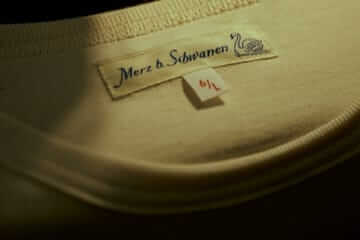Style Profiles & Features
Speaking with fashion industry experts and long-form reporting on the latest menswear news.
Style Profiles & Features
Speaking with fashion industry experts and long-form reporting on the latest menswear news.
-
![]()
Style Strategies:
Nico Lazaro -
![]()
A Rugged
New Collab -
![]()
Anatomy of a Classic:
The Perfect T-Shirt -
![]()
Style Strategies:
Jake Woolf -
![]()
Raw Denim
Is Back -
![]()
These Shoes Bring the Cool (and the Comfort)
-
![]()
Style Strategies:
Geoff Haggary -
![]()
Style Move:
The Ralph Tuck -
![]()
Style Strategies:
Keith James -
![]()
Your Thanksgiving
Packing List -
![]()
Anatomy of a Classic: The L.L.Bean Tote
-
![]()
Style Strategies:
Aaron Levine -
![]()
Style Strategies:
Matt Hranek -
![]()
Making the Case for
(and Against) Cost Per Wear -
![]()
Style Strategies:
Quaid Walker -
![]()
Style Strategies:
Benjamin Edgar Gott -
![]()
Go West
Young Man -
![]()
A Subtle
Style Move -
![]()
Style Strategies:
Brett Viberg -
![]()
The Seiko
Mod Boom -
![]()
3 Ways to Wear:
Fleece -
![]()
Style Strategies:
Mikael Kennedy -
![]()
The Brands to
Watch in 2024 -
![]()
Style Strategies:
Erik Allen Ford -
![]()
3 Ways to Wear:
A Tweed Blazer -
![]()
Style Strategies:
Russell Blackmore -
![]()
What to Wear for
Thanksgiving -
![]()
Style Strategies:
Savannah Yarborough -
![]()
Style Strategies:
Kevin Kafesu -
![]()
Style Strategies:
Michael Hill -
![]()
Style Strategies:
Davide Baroncini -
![]()
Style Strategies:
Henrik Berg -
![]()
3 Ways to Wear:
Fisherman Sandal -
![]()
Style Strategies:
Justin Chung -
![]()
Style Strategies:
Michael Williams -
![]()
Style Strategies:
Somsack Sikhounmuong -
![]()
Style Strategies:
Tom Broughton -
![]()
Style Strategies:
Matt McCormick -
![]()
Mall Brands
Are Back -
![]()
Style Strategies:
Marcus Allen -
![]()
Semi-Permanent
Tattoos -
![]()
Anatomy of a Classic:
The Cartier Tank -
![]()
What Is It
About Patina?










































